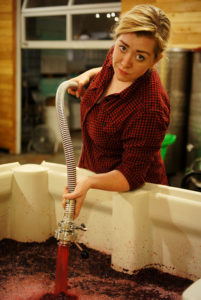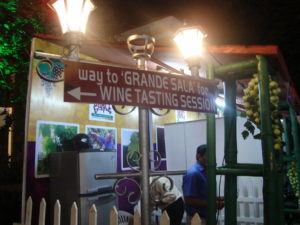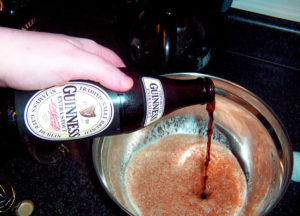It’s very difficult, if not impossible, for one single person to thoroughly review every single piece of peer reviewed literature related to wine that is published every day. This Wine Literature Review Lightning Round series presents three new papers (within the past year or two) in one post by briefly summarizing the research and linking to the abstract in order for you to pursue further if you’re interested.
WINEMAKING
“Thermal effects of pump-overs during red wine fermentation” published in February 2017 in the journal Applied Thermal Engineering, aimed to evaluate the effects of pump-overs on temperature in red wine fermentation. According to the researchers, despite the wide use of pump-over in winemaking all over the world, there is very little peer-reviewed research on the effects of these pump-overs on the temperature of the fermenting must. Since temperature is a critical component of the winemaking process, having peer-reviewed scientific research on the topic could be quite valuable to winemakers.
Brief Methods
Three tests were performed in this study:
1st Test: A 20m3 capacity stainless steel tank was used. The set-up included an automatic pump-over system with an electronically-controlled hydraulic pump and two cooling jackets. 6 temperature probes were placed at different locations inside the tank. Average temperatures and variation of temperatures within the tank were measured every 5 minutes. 18,500kg of destemmed Merlot was added to the tank, and Saccharomyces Bayanus was the yeast of choice. 8 pump-overs were performed, with varying durations and aeration methods (some aerated, some not aerated). Fermentation was measured three times per day.
2nd test: A 3m3 capacity stainless steel tank was used. 2,700kg of Sangiovese was added to

Photo courtesy Flickr user Jim Fischer
the tank, and Saccharomyces Bayanus was the yeast of choice. One temperature probe was placed 30cm below the pomace cap. Temperature was measured every 5 minutes. 8 pump-overs were performed, each lasting 6 minutes (two were aerated, the rest were not aerated). Fermentation was measured twice per day.
3rd test: A 5m3 capacity stainless steel tank was used. The set-up included a plate heat exchanger. 4,100kg of Cabernet Sauvignon was added to the tank, and Saccharomyces Bayanus was the yeast of choice. One temperature probe was placed in the middle of the tank, 30cm below the pomace cap. Temperature was measured every 5 minutes. 8 pump-overs were performed: 4 with the use of the heat exchanger, and 4 without it. All of the pump-overs were not aerated and each lasted 5 minutes. Fermentation was measured 3 times per day.
Brief Results/Conclusions
Before pump-overs occurred, there was quite a bit of temperature variation within each tank (for example: in the first test, when the average maximum temperature was 26oC, probes read a low of 22.8oC and a high of 30.1oC at the same time in the same tank).
Immediately after a pump-over, the variation in temperatures throughout the tanks decreased, resulting in a more homogenous fluid in regard to temperature.
Pump-overs were effective in reducing the temperature variations within the fermenting wine in both aerated and non-aerated protocols.
Temperature decreases were noted at higher in the early stages of the pump-over sequence, which slowed over time.
The temperature decreases were due to the heat transfer between the must and the tank itself, with this transfer changing as a function of the following: specific heat of the juice, mass of juice, exchange surface, tank material and thickness, temperature of the juice, and the ambient/cooling jacket temperature.
According to the researchers, the results of this study suggest that pump-overs frequency could help improve the efficiency of the cooling jackets.
Source:
WINE SELECTION AND PURCHASE BEHAVIOR
“Deterrents to wine consumption in the emerging market of India: A qualitative study”, published in July 2017 in the International Food Research Journal, aimed to determine why wine consumption isn’t increasing as one would expect based upon population growth and other beverage consumption growth in India.
With India having the second highest population in the world and being the third largest economy in terms of purchasing power parity, some have argued that India is a very promising market for wine, particularly since their own wine industry has been growing at a rate of 20-30% per year in recent years. However, as of 2011, wine consumption is only at 0.009 liters per capita per year, compared with 4 liters as the global average. Looking at other alcoholic beverage, wine lags way behind beer and whisky consumption in India, with beer consumption at 1.6 liters per capita per year, and whisky consumption at 1.24 liters per capita per year.
So, what’s keeping wine consumption so far behind other alcoholic beverages in India?

Photo By Fredericknoronha (Own work) [CC BY-SA 4.0 (http://creativecommons.org/licenses/by-sa/4.0)], via Wikimedia Commons
63 people from Delhi and Bangalore, India, were interviewed for this study. Participants were regular alcohol drinkers who preferred a variety of different types of alcoholic beverages.
Brief Results/Conclusions
There were 5 primary take-aways from interviewing Indian alcohol consumers in regard to why wine consumption lags significantly behind other alcohols in the country: low value for the money, lack of awareness, low “self-image congruence”, wine is seen only as a special occasion drink, and low “socio-cultural relevance”.
Basically, according to alcohol-consuming India people, the wines available to them aren’t very good compared with equally-priced beer or liquor, so their money is better spent elsewhere. Regarding the low “self-image congruence” factor, consumers thought of wine more as a fruit beverage and not an alcoholic beverage like beer or whisky. Additionally, they associated wine more as a feminine drink, so men in particular were not interested in the beverage. Regarding the low “socio-cultural relevance, many consumers stated that they did not drink alcohol with meals, and since wine is marketed heavily toward pairing well with food, it misses potential Indian consumers completely. Additionally, many Indians prefer to drink their wines very cold due to the excessive temperatures in the region, so marketing a red wine is much more difficult than marketing a white.
Overall, a lot can be done to help improve wine consumption and level the playing field between wine, beer, and whisky in India. Knowing the market better and creating a campaign specifically for that region is key to getting your wines in and sold.
Source:
HEALTH/COOKING
“Cooking with beer: How much alcohol is left?”, published in the Oct-Dec 2016 issue of the International Journal of Gastronomy and Food Science, aimed to determine just how much alcohol is left after cooking various recipes utilizing beer as an ingredient. According to the authors, determining how much alcohol is left in a given food item is important not only for those closely monitoring their alcohol intake, but also for determining the caloric value of the food.
Brief Methods
10 different foods were prepared using recipes from cookbooks (though some may have been tweaked slightly): vinaigrette, pancakes, rye bread porridge, carrot soup, steamed fish, spare ribs, braised beef, wheat bread yeast fermentation, wheat bread sourdough fermentation, and rye bread.
Ethanol concentrations for each food were measured after the recipe was cooked and complete. Theoretical ethanol concentrations were calculated to compare with actual ethanol concentrations after preparation was complete.
Brief Results/Conclusions
Ethanol levels in the prepared foods ranged from non-detectable to 2.62%v/v and 2.46%w/w.
Taking into consideration how much one typically eats during a meal, the highest value of “ethanol per serving” was found to be 1.28g, which translates to about 11% of a 4.6%abv lager-style beer (so a few sips??).

Photo courtesy Flickr user Elizabeth Murphy
Most of the time, theoretical ethanol concentrations were higher than the actual ethanol concentrations, which makes sense considering theoretical calculations don’t take into consideration alcohol loss during the prep stages. The only foods where the actual ethanol values were higher than the theoretical values were the foods that underwent fermentation during prep (i.e. the breads), and therefore more ethanol was created in the process, inflating the actual ethanol values higher than the theoretical.
The only food that did not undergo a heat treatment during preparation was the vinaigrette, which had a higher final ethanol level of 2.62% v/v.
Overall, as most everyone already knows, cooking with beer or any alcohol results in a decrease in ethanol content in the final product (though how much depends upon the exact recipe). It is important to note, however, that some alcohol is almost always still present, and depending upon your sensitivity level, it is something to consider when making or ordering a dish that calls for alcohol (though for most people, the amount of alcohol remaining wouldn’t cause any harm). It would be interesting to see a study on foods made with wine, as wine tends to have higher starting alcohol concentrations than beer, and it would be curious to see how much is left over after cooking.
Source:
